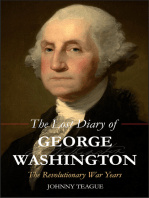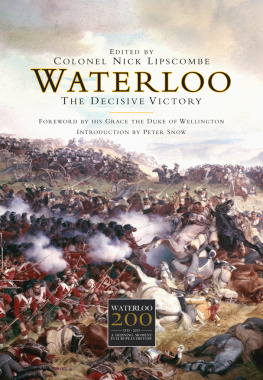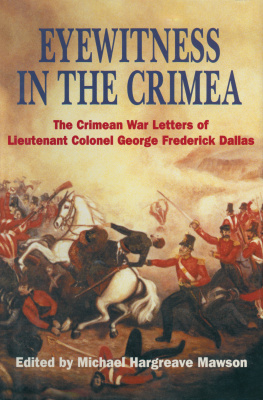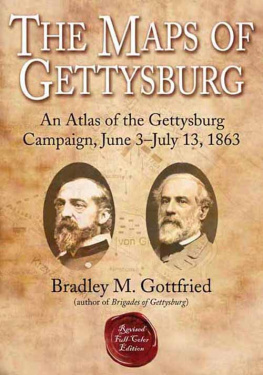This edition is published by PICKLE PARTNERS PUBLISHINGwww.picklepartnerspublishing.com
To join our mailing list for new titles or for issues with our books picklepublishing@gmail.com
Or on Facebook
Text originally published in 2000 under the same title.
Pickle Partners Publishing 2014, all rights reserved. No part of this publication may be reproduced, stored in a retrieval system or transmitted by any means, electrical, mechanical or otherwise without the written permission of the copyright holder.
Publishers Note
Although in most cases we have retained the Authors original spelling and grammar to authentically reproduce the work of the Author and the original intent of such material, some additional notes and clarifications have been added for the modern readers benefit.
We have also made every effort to include all maps and illustrations of the original edition the limitations of formatting do not allow of including larger maps, we will upload as many of these maps as possible.
ABSTRACT
In June of 1815 Napoleon led French forces on an offensive campaign into Belgium against the Allied Anglo-Dutch and Prussian armies under Wellington and Blucher. During this campaign Napoleon and several of his marshals made serious errors that led to missed opportunities for victory and ultimately to defeat at Waterloo. Less than 50 years later Robert E. Lee led Confederate forces on an offensive campaign into Maryland and Pennsylvania against the Union Army under Hooker initially, then Meade. A meeting engagement near Gettysburg, Pennsylvania led to three days of fighting during which Lee and several of his generals made critical errors that allowed opportunities for victory to pass and ultimately led to decisive defeat.
These campaigns were remarkably alike in a number of ways. This paper reviews the campaigns and discusses similarities in the strategic settings, campaign objectives, size and disposition of forces, battlefield terrain, tactics employed, and leadership of each army. In particular, the paper compares the performances of selected French and Confederate leaders and how they contributed to the defeat of their respective armies. These comparisons provide valuable lessons learned for the conduct of future military operations.
WATERLOO AND GETTYSBURG: A CAMPAIGN COMPARISON
Those who cannot remember the past are condemned to repeat it. George Santayana, 1906. {1}
For centuries military professionals have studied the accounts of previous conflicts and the tactics and strategies employed by their predecessors in order to improve their own capabilities to lead soldiers in combat. Perhaps the greatest benefit of such studies is that of learning from the failures of others so that the mistakes that led to these failures and their attendant consequences can be avoided in future conflicts. Among the many great military campaigns and battles of the world studied for this purpose, the French Waterloo campaign of 1815 in Europe and the Confederate Gettysburg campaign of 1863 in the United States are two of the most significant and well-documented. In a span of less than 50 years, the relatively small and strategically insignificant towns of Waterloo, Belgium and Gettysburg, Pennsylvania became the focal points of two of the most decisive campaigns in military history. At Waterloo the Allied Anglo-Dutch and Prussian armies virtually destroyed Napoleons French army, ending his short-lived return to power and forever shifting the balance of power in Europe. Similarly, at Gettysburg the American Union Army dealt a crushing defeat to Lees Army of Northern Virginia, ending the Confederate offensive and significantly shifting the momentum of the war in favor of the North. The French and Confederate armies were led by men who are universally recognized as great military leaders - Napoleon Bonaparte and Robert E. Lee, yet both armies made some serious mistakes, missed multiple opportunities to achieve decisive victories, and ultimately suffered devastating defeats.
In addition to the common campaign outcomes (uncharacteristic, devastating defeat), further study reveals a remarkable degree of similarity in other areas that make these campaigns well suited for comparison. The purpose of this paper is to compare the Waterloo and Gettysburg campaigns from the French and Confederate army perspectives to identify key elements they had in common and to assess the extent to which this commonality contributed to the ultimate defeat of the two armies. The paper first presents a review of each campaign for context, then addresses specific areas of comparison and discusses how these relate to the campaign outcome. The paper concludes with a discussion of the relevance of this information to the armies of today and the future. Although well over a century has passed and dramatic changes in the tools and methods of war have occurred since these campaigns, lessons learned from this comparison should be as relevant today as they were then.
THE WATERLOO CAMPAIGN
STRATEGIC SETTING AND CAMPAIGN PLAN
Following his defeat and abdication in April of 1814, Napoleon was exiled to the island of Elba and the Bourbons regained the throne of France in the person of Louis XVIII. The European Allies that had united to defeat the Corsican were now quarreling over establishment of new territorial boundaries throughout Europe. They had, however, agreed to allow France to retain her pre-revolution frontiers in an effort to strengthen King Louis and bolster his efforts to pacify a French population uneasy about loss of the freedoms they had gained in the revolution. After less than a year at Elba, Napoleon escaped and returned to France, landing near Cannes on 1 March with a thousand soldiers. King Louis sent Marshal Ney to arrest him, but instead Ney and his soldiers welcomed him and Napoleon returned triumphantly to Paris on 20 March. {2} King Louis fled to Ghent and Napoleon resumed his role as Emperor. Reinstated by the army and welcomed by most, Napoleon recognized that he did not, however, have the same absolute power he previously held. While he clearly commanded the military, he had only a slight hold on the civil population. {3}
Napoleon immediately extended overtures of peace to the Allied governments, indicating that he would honor all existing treaties, but the Allies declared that his return to power violated the fundamental principle of the Treaty of Paris and constituted a declaration of war against Europe. {4} The Allies then formed the Seventh Coalition with Great Britain, the Netherlands (which included Holland and Belgium), Prussia, Austria, Piedmont, Switzerland, Spain, Portugal, Russia, Bavaria, Denmark and Sweden. The Duke of Wellington was placed in command of the Anglo-Dutch (also called Anglo-Belgian or Anglo- Allied) Army and in April began a buildup of forces in Belgium with Prince von Bluchers Prussians in preparation for an invasion of France. Napoleon found himself facing the threat of invasion from multiple directions and without the soldiers or equipment he needed to defend France. {5} He immediately began rebuilding and reorganizing the military, but by 1 June his effective field forces still numbered less than 200,000 men. {6} By contrast, the Allied armies encircling France already numbered in excess of 660,000 and were continuing to build up. {7} This situation left Napoleon with two options: continue preparing for the impending attack or strike out at the Allied forces closest to him. To adequately defend France, Napoleon estimated he would need about 800,000 men and time to properly train and equip them. {8} While he estimated that the Allies would need at least three months to be in sufficient strength to assault Paris, allowing him some time to prepare, he realized that this would still leave much of France occupied. {9} Further, even with additional manpower the odds against him would be greater once the Allies had amassed their forces than if he were to strike quickly against the forces in Belgium who outnumbered him by less than two to one. Finally, and perhaps most importantly, Napoleon recognized that the war-weary people of France, over whom he no longer had total power, objected to operations on their soil. Given these issues, Napoleon opted to seize the initiative and strike the Allied armies in Belgium. His reasons for attacking this particular force at this time and place were quite logical. First, the Belgium territory was formerly a part of the French Empire and had many French sympathizers, to include some in the ranks of the Anglo-Dutch army of the Duke. Second, the Allied force was comprised of armies of two different nationalities who were likely to have language and coordination difficulties. Third, the attack would prevent a counter-invasion by the most threatening Allied force. Finally, a defeat of the British, who were absorbing the bulk of the costs of the operations against France, would discourage further financing. {10}







